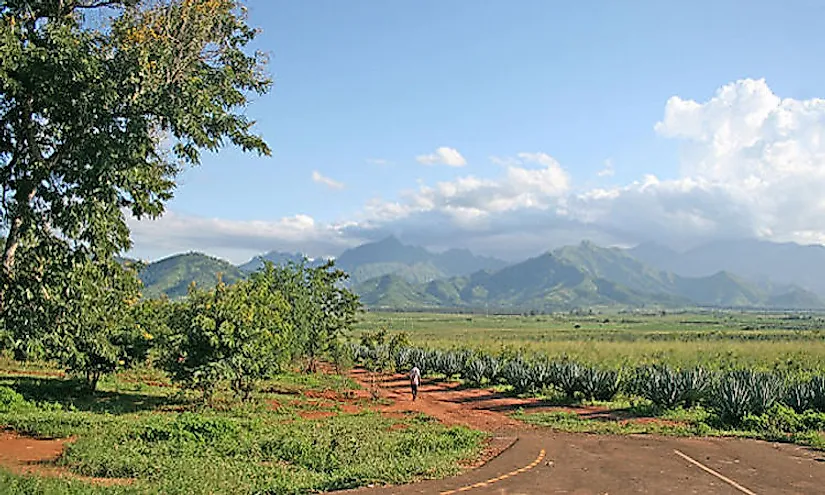Top Sisal Producing Countries In The World

Sisal (Agave sisalana) is a plant species of Agave that is indigenous to the southern region of Mexico but is widely cultivated in many parts of the world and yields stiff fiber used to make various products. Sisal can either refer to the fiber or the common name of the plant based on the context used. A sisal plant consists of a bunch of sword-like leaves around 1.5-2 meters tall. The plant has a lifespan of 7-10 years and produces about 200-250 economically usable leaves. A single sisal leaf contains about 1000 fibers with the fibers accounting for only 4% of the whole plant. Sisal thrives in temperatures above 25 degrees Celsius and is therefore considered a tropical and subtropical plant.
Cultivation Of Sisal
Originally the Aztecs and the Mayans used sisal for the production of crude fabrics and paper. By the 19th century, the cultivation of sisal had spread to the Caribbean islands, Florida, Asia, Brazil, and Africa mostly to Kenya and Tanzania. Sisal first became a commercial crop in late 1930 in Brazil while its first export was made in 1948 while the acceleration of sisal cultivation was in the 1960s which saw the establishment of some spinning mills.
Production Of Sisal
Sisal is produced by using bulbils propagated from the buds in the flower stalk or from the suckers that grow around the plant's base which is grown in nursery fields until they are mature enough to be transferred to the final place of growth. These methods of sisal production offer no probable genetic enhancement. Sisal is number 6 among fiber plants and it represents 2% of the production of plant fibers in the world.
Uses Of Sisal
Due to the strength, ability to stretch, resistance to deteriorate on salt water, affinity for some dyestuffs and durability of sisal, it was traditionally used for agricultural twine. The significance of the sisal’s traditional use has helped develop other techniques for haymaking. Other uses of sisal include making ropes, general cordage, low-cost paper, mattresses, buffing cloth, carpets, geotextiles, dartboards and handicrafts including other things. Sisal fibers also produce clothes, slippers, spa products, lumbar support belts, rugs and other stuff. Waste products from sisal are used for the production of stock feed, biogas or extraction of pharmaceutical products. Due to sisal's Agave nature, it can be used to produce tequila-like liquor.
The Top Three Countries Producing Sisal
In 2013 the global production of fiber accounted for 281,000 tons with Brazil being the largest producing country with 150.6 thousand tons of sisal. Tanzania follows in as the second leading producing country with approximately 34.9 thousand tons of sisal. Kenya follows Tanzania as the third largest producing country accounting for 28.0 thousand tons of sisal.
Importance Of Sisal To The Leading Producing Countries In The World
Sisal production is one of the longest surviving agricultural industries. The other leading countries that produce sisal in the world are Madagascar, People's Republic of China, Mexico, and Haiti accounting for 18.9, 16.5, 12.0 and 9.0 thousand tons respectively produced in 2013. The importance of sisal to these countries is that its production not only enhances economic growth but is also a source for employment opportunities. Sisal is still expected to provide well-being to a large number of people from the leading producing countries.
Top Sisal Producing Countries In The World
| Rank | Country | Sisal Production, 2013 (thousands of tons) |
|---|---|---|
| 1 | Brazil | 150.6 |
| 2 | Tanzania | 34.9 |
| 3 | Kenya | 28.0 |
| 4 | Madagascar | 18.9 |
| 5 | People's Republic of China | 16.5 |
| 6 | Mexico | 12.0 |
| 7 | Haiti | 9.0 |











